
Linda and Steve Dashew’s four books now available as a free PDF download.

Linda and Steve Dashew’s four books now available as a free PDF download.

Join Linda and Steve Dashew aboard the FPB 78 – 1 Cochise on a 7500 mile/12,070 kilometer record setting voyage, Read the rest »
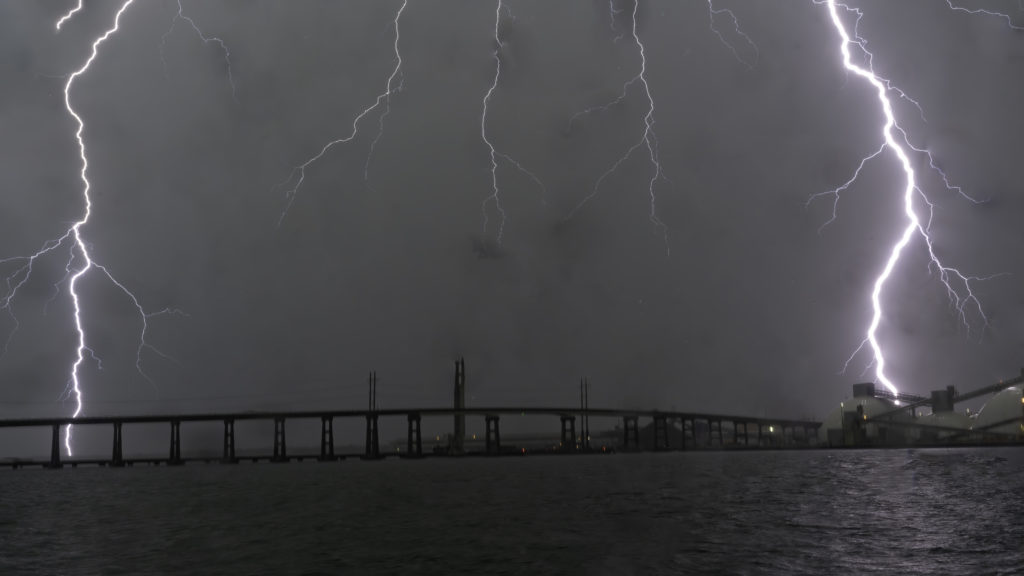
Although we have never been hit with lightning, it is one of the few things about which we worry when at sea, in particular with modern yachts. Hence this new vide0. Read the rest »
![]()
This is the third video in Steve Dashew’s series on his search for the perfect cruising yacht. Read the rest »

When we did our posts on the Wicked FPB 97 we were unable to take you for a tour of the interior due to privacy concerns for the owners. That has now changed and Sue Grant, the managing director of Berthons International has done a wonderful interior and exterior tour. Read the rest »

For a link to the video which show and tells it all Read the rest »
How do you create the best possible cruising yacht? Read on and we’ll share our formula. Read the rest »

We are standing at the forward end of the great room aboard FPB 78-1 Cochise. It is eerily quiet as we watch the steam gauge climb from 13 to 20 knots, linger for a moment, before peaking at 22. A fast-rising SE gale has kicked up a steep sea, now confused with a reflected crossing wave pattern as we rapidly close with the Southern entrance to New Zealand’s Bay of Islands. This 60 metric ton motor yacht is surfing under autopilot control. The seas are perfect for Cochise and she rides the better waves for several minutes at a time, at speed length ratios above 1.6. Cochise is the most recent iteration of the perfect yacht, at least for us. Aboard Cochise, and the rest of our yachts, the key design ingredient upon which all else rests is steering control. We are warm, dry, and very comfortable.
It wasn’t always so. Read the rest »

It is late spring in the Bahamas, water temperature is 83/85F and air that or more. Humidity often is in the 80% range. We are making water, staying comfortable with air conditioning in the evening, generally leading a carbon neutral existence. Welcome to the new world of solar panel cruising. What follows is a bit of data and several suggestions that might help on your own vessel.
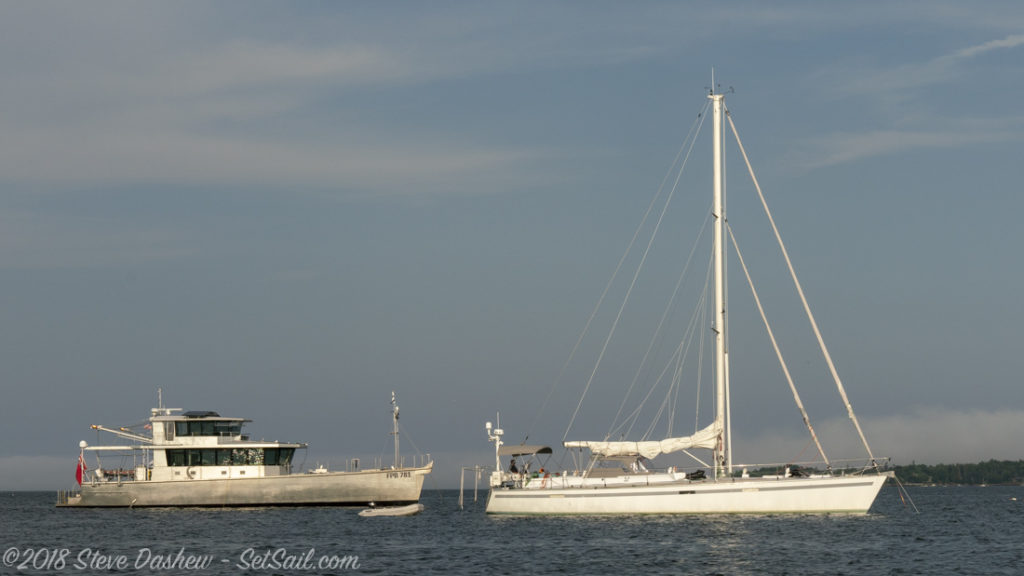
There is nothing we enjoy more when cruising than meeting up with our designs and their owners. This past summer in Maine was great fun in this regard. Read the rest »

A new video in which we reveal the secrets behind all those ocean-crossing miles… Read the rest »

The Nespresso coffee machine hisses in the background as Linda makes a change-of-watch latte. The faint glow under the eastern clouds heralds another beautiful morning at sea. Read the rest »

The July 2017 issue of Boat International magazine features a nine page article on FPB 78-1 Cochise… Read the rest »

Soundings Magazine has an extensive feature on FPB in their March 2017 issue. They’ve also put together a nice video on the FPB designs for their website… Read the rest »

We continue to be impressed with Cochise’s solar array. From ten solar panels we are generating within spitting distance of 20 kWh. Read the rest »

The aft deck of the FPB 78 is a study in flexibility. Read the rest »
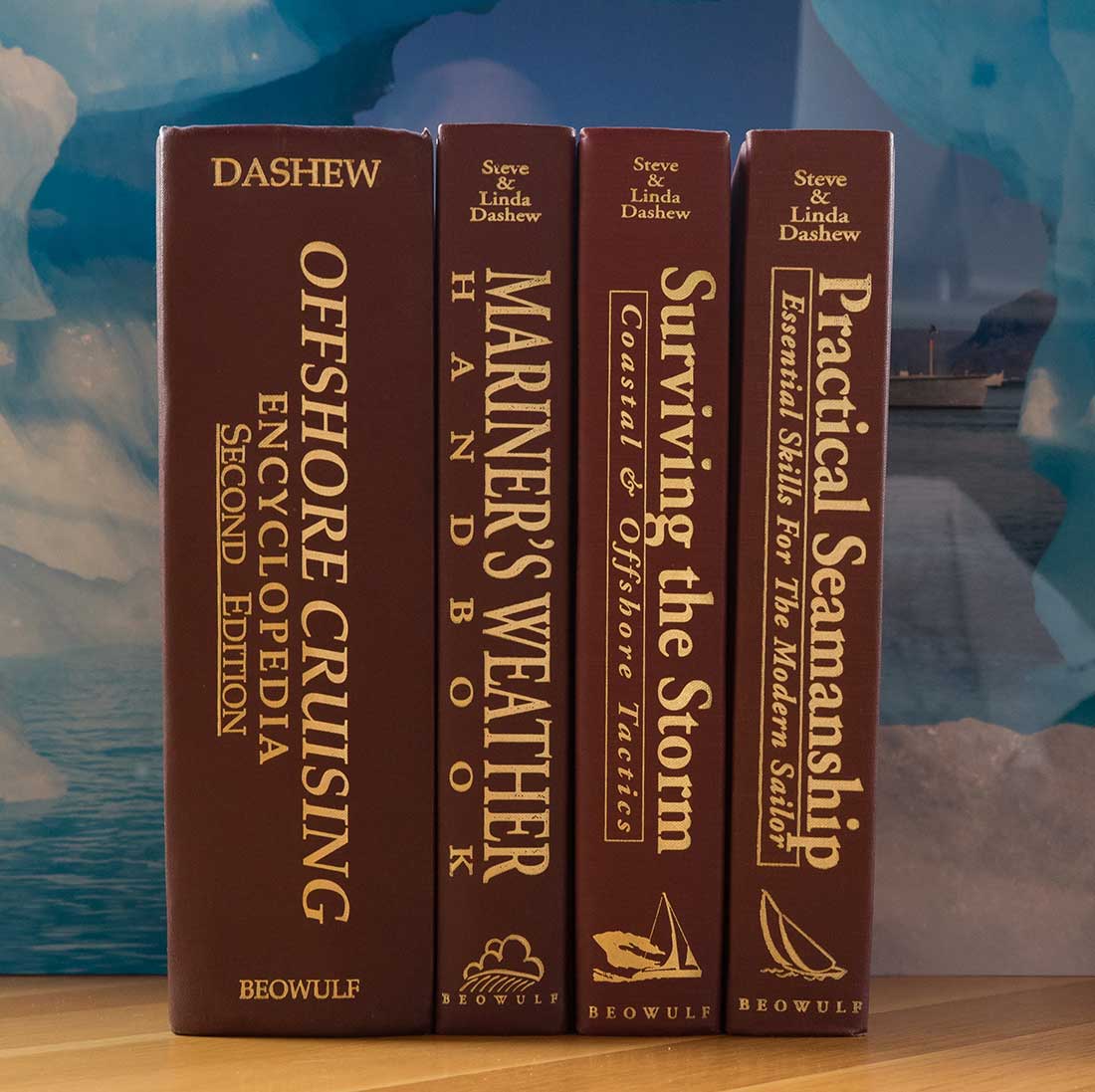
For decades, Linda and Steve Dashew’s books have been considered essential references for any serious cruiser. Having been blessed with the support of the yachting community for many years, they’d like to return the favor. Read the rest »

In the process of wrestling with monitor tradeoffs, we have come across a great new monitor.
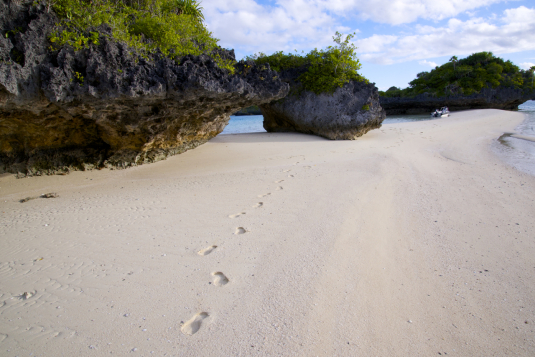 ©Stan & Valerie Creighton: Fulaga, Fiji
©Stan & Valerie Creighton: Fulaga, FijiWhen your voyaging takes you off the beaten path, where shore power and technical assistance is a rarity, the ingredients required for successful cruising change.

Beowulf leaving Norfolk, VA on her way to the BVI at the start of the 2001 Caribbean 1500. Read the rest »
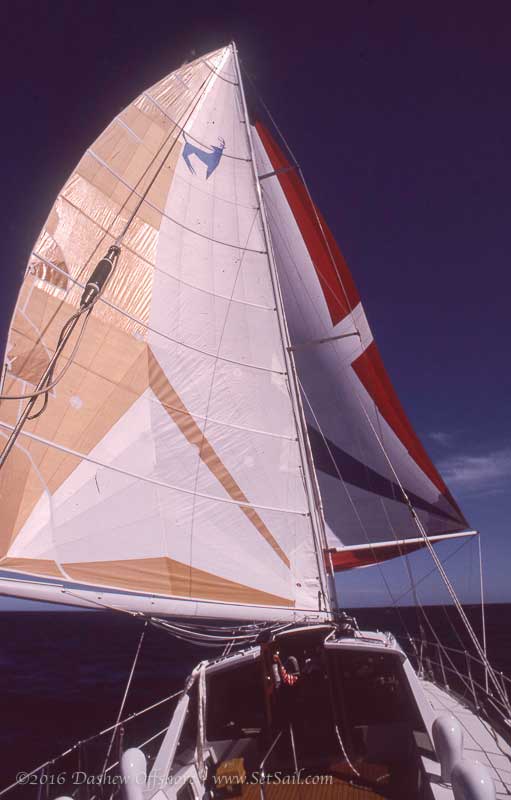
You are looking at a huge mistake: a new mainsail that did not fit, with too much roach. Read the rest »

Innismara, the yacht that started us thinking so many years ago… Read the rest »
When we wrote this introduction six years ago, during the depths of a marine industry depression, we had no idea that the summer of 2016 would have 11 FPB 64s in the water cruising. For all the latest FPB 64 updates, click here. Read the rest »

We learned a long time ago that the key to happy cruising is a smooth ride uphill. Careful weather routing and a good turn of speed reduces your exposure, but those inevitable rough upwind passages are what people remember Read the rest »
 Hi folks, Sarah here– I was just browsing the blogs and found this teaser for an upcoming feature in Boat International on innovative yacht designers. I thought it might be of interest to SetSailors: Swizzle Blog.
Hi folks, Sarah here– I was just browsing the blogs and found this teaser for an upcoming feature in Boat International on innovative yacht designers. I thought it might be of interest to SetSailors: Swizzle Blog.

FPB 78-1 is now framed, deck plating is on, and hull plating begins soon. Which is good because we are depressed with this enforced stay on land.
“The new Dashew passagemaker draws much of its heritage from the high-performance sailboats for which the Dashews are well known…” –Bill Parlatore, Passagemaker Magazine

Of all the sailboats we’ve done over the years, Beowulf is our favorite. She was our ultimate couple’s cruiser, and the benchmark, against which we measured everything when we started down the FPB path. In seven years of cruising part time, see saw 40,000 nautical miles slip under her keel with just two on board. Read the rest »
“When the Dashews finally decided to resort to motive power, Steve Dashew designed a boat with the spirit of a yacht that could take on the roughest seas…”
–Boat International Magazine

Every now and then in yacht design, the thousands of details involved to produce a boat combine in a unique way, creating a vessel which performs substantially better than projected. Read the rest »
“…One of the coolest boats I have had the pleasure to spend time on.”
-Bill Parlatore, Passagemaker Magazine
Let us take you on a tour of the FPB prototype, Wind Horse.
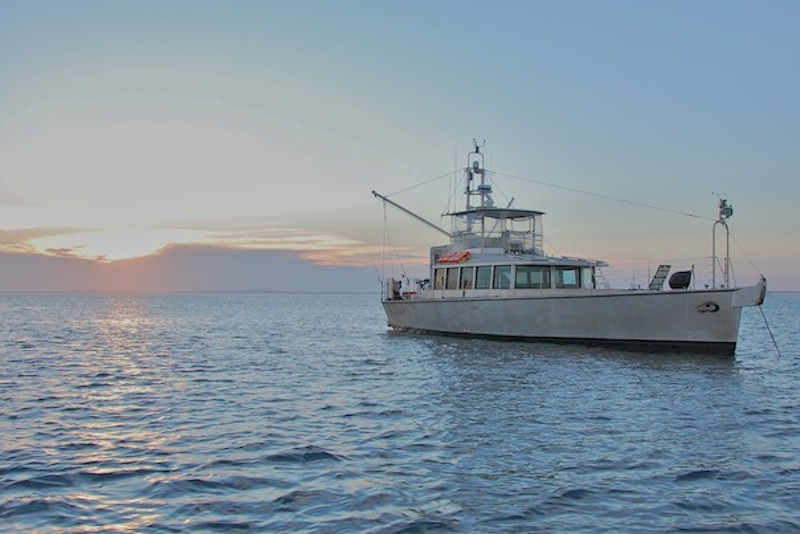
At Dashew Offshore our goal has always been to build the perfect cruising yacht; delivered on time, within budget, without surprises, resulting in a contented client.
To make this unique approach to the yacht building business successful, we have to purposely limit our sales, something that many would find counter-intuitive given the demand for FPBs.
Our design goal has always been to cross oceans in maximum comfort and safety Read the rest »

We have just had the most amazing four months of cruising. (This post was written in 2008, after voyaging from California to the UK.) Read the rest »
We’ve been trying to describe what it is like to have the majority of our day to day experience aboard in an area with 360-degree views. Read the rest »
People are always asking how I like cruising on this new boat. (This post was written by Linda Dashew in 2007, after the first three seasons of cruising aboard FPB 83 Wind Horse.) Read the rest »
The following was originally written in the fall of 2008 as the economic system appeared to be melting down. Read the rest »
We learned years ago that an efficient deck layout, with the ability to store and handle a variety of dinghies, is a critical component to successful cruising. Read the rest »
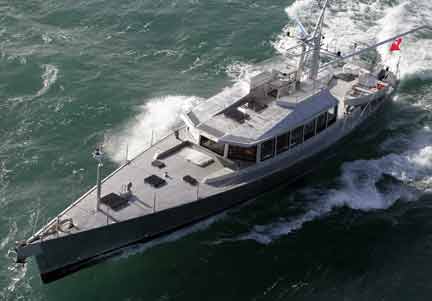 The process of developing the exterior design is never easy. Read the rest »
The process of developing the exterior design is never easy. Read the rest »
Designing an interior which looks good and is enjoyable at anchor – and works well at sea – is not easy. Read the rest »

Over the last couple of years we have had a number of discussions about the mechanics of stability and capsize risks. Read the rest »
If you’re thinking about heading offshore at some point, the comments which follow may be of interest.
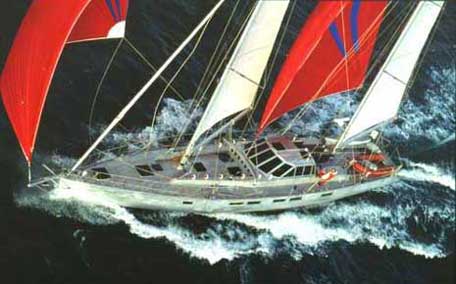
We’ve switched to a form of cruising at which we’ve looked down our noses (well, at least Steve has) for half a century. Read the rest »
“Whatever the conditions, disciplines and concepts learned through years of high-energy ocean sailing have led them to create an ‘unsail’ boat that should serve them very well.”
–Seahorse Magazine
Our approach to the marine business is a little different. We don’t do a lot of projects.
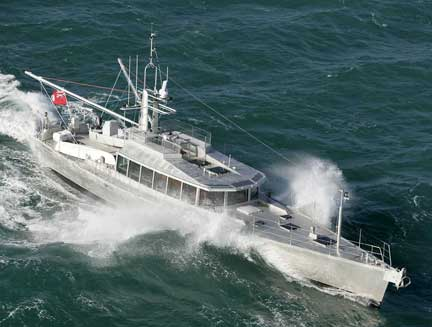
You can contact Dashew Offshore via e-mail at DashOff@setsail.com.
“The new Dashew passagemaker draws much of its heritage from the high-performance sailboats for which the Dashews are well known. The last of that evolution of sailing yachts was Beowulf, a 78-foot ketch in which Linda achieved the family speed record: surfing at 32.7 knots down waves far offshore.”
–Bill Parlatore, Passagemaker Magazine
Of all the sailboats we’ve done over the years, Beowulf is our favorite.
“…the interior joinery is absolute perfection.”
–Sea Spray Magazine
We’ve gathered together a selection of photos covering some of the boats we’ve built over the past 25 years.
“Perhaps better known for his Deerfoot, Sundeer, and Beowulf offshore sailing vessels, which are known and respected for being capable of comfortable, long offshore passages with a crew of two, [the FPB] represents a somewhat completely different tack, so to speak.”
–Northwest Yachting Magazine
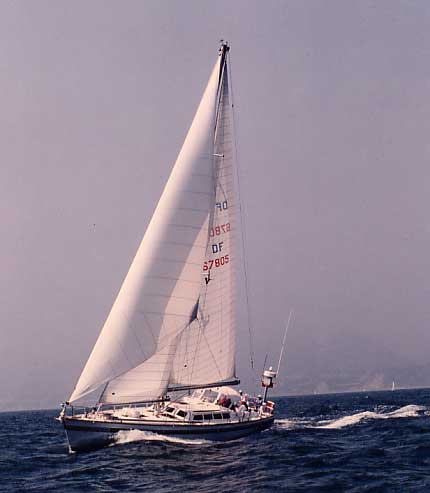
Following is a sampling of the boats that we’ve designed and built over the past 35+ years.

If you have been working down this website from the top you are probably overflowing with technical data. If there is any bandwidth left, a few words on Dashew Offshore and its history may be of interest.
“Wind Horse is well behaved. She tracks straight. The autopilot gain is set to its lowest level and we find our own way down the waves, showing us occasional bursts to 20 knots.”
–Yachting World Magazine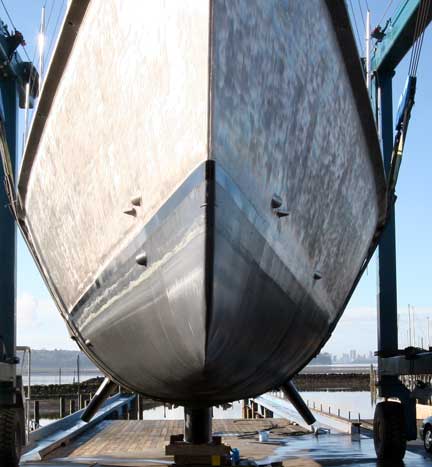
Most cruisers dream about trade wind passages: long periods with the wind and seas on the quarter, steady winds, and beautiful puffy clouds. But in the context of being comfortable at sea, trade wind sailing is often less desirable than other angles.
Our approach to domestic water systems has evolved over the years, with the introduction of ever more efficient reverse osmosis watermakers.
Air conditioning specifications always involve a lot of tradeoffs.
Of all the issues facing us during the design of this boat, none was more important than the approach to stabilization.
Of all the systems aboard our boats none is more important than good heating for the interior, and an efficient supply of hot water for bathing.
This is the first time we have not used a holding plate system in the fridge and freezer. We took this approach as on paper it appeared more efficient.
 Over the years we’ve been able to fine tune our approach to onboard electrical gear.
Over the years we’ve been able to fine tune our approach to onboard electrical gear.
In this section we’ll cover the components of the drive line: engine, transmission, thrust bearing and CV axle, and props.
The heart of any cruising vessel – sail or power – is in its systems. It is the systems that bring you ambiance and pleasure (and, if not done correctly, a load of frustration).
The ultimate safety test for any vessel bound offshore is how well it resists capsize. Many factors enter into this equation.
In the past we’ve used combination washer-dryers because they are compact and easy to work into the interior.
We need a fair amount of office space, as we are often at work when while we are cruising. (Although it is better to just cruise!)
The layout of the saloon is developed around the concept that we primarily passage with just two of us aboard, and we prefer that watch keeping, working in the galley, and just plain hanging out occur in the same area.
Forward Suite
There are several ways of looking at the design premise for the owner’s “suite”.
The galleys on our previous designs have worked extremely well, providing excellent storage, good counter space, and ease of use at sea. This galley goes a step beyond.
We’ve been refining our approach to cruising interior design for the last 28 years – we’re at the point where we have a pretty good handle on the combination of features required for comfort at sea and in port.
We first started putting swim steps on our designs in 1978. Initially they were a safety device, a way to make man overboard recovery easier.
At anchor, when waves are more or less on the beam, all boats begin to roll, while comfort rapidly deteriorates.
There are six scenarios working on deck, each of which is considered for both layout and hardware specification.
Cruising in the tropics brings with it a special set of requirements because of the heat and humidity.
The flying bridge has become one of our favorite places at anchor and when on passage in pleasant weather.
We’ve been involved with the design and construction of ultimate cruising yachts for almost three decades.
As you go to sea, you probably harbor in the back of your mind the particular weaknesses of your vessel. If unfavorable weather is forecast, it is often these weaknesses, coupled with a lack of confidence that create tension, concern, and fear.
The hull, deck, and house structure for the FPB 64 are engineered to our normal high standards, with exceptional factors of safety.

There are all sorts of ways of calculating fuel burn and range under power.
One of the key design elements in the FPB series is the approach to fuel and water tanks.
The engineering concept we use today has its beginnings in the 1980s.
We have spoken at length about the logic of get home systems in our previous articles.